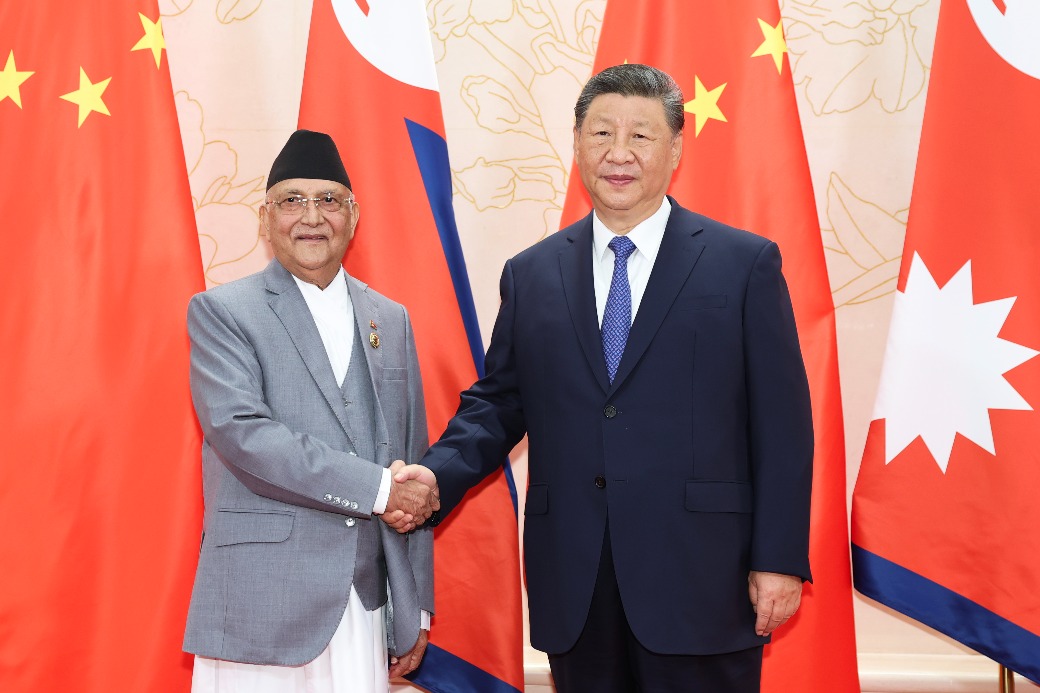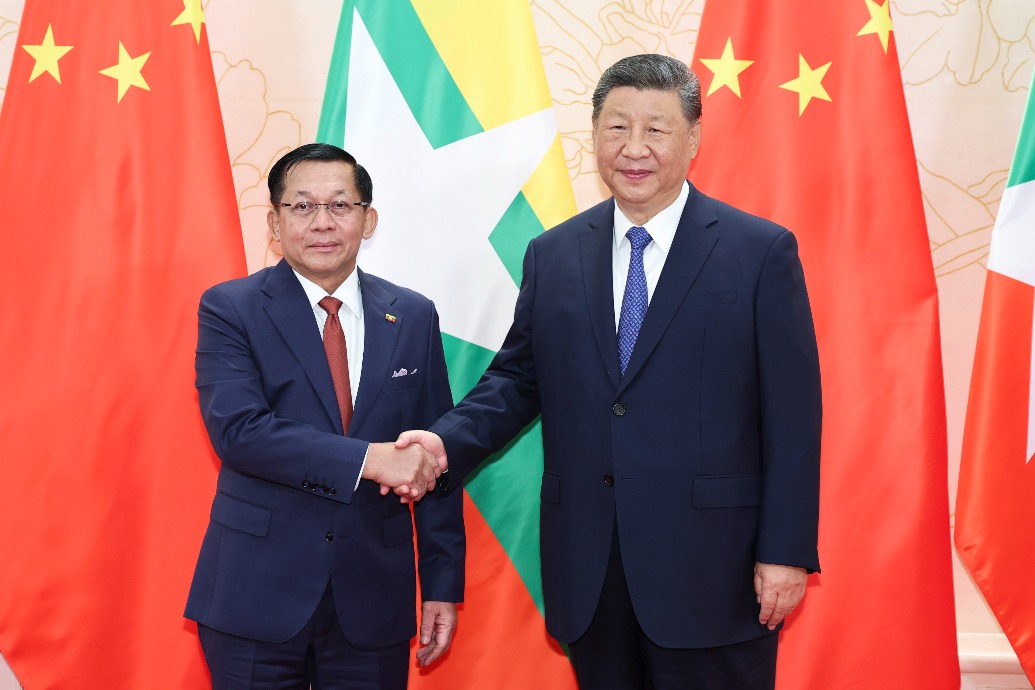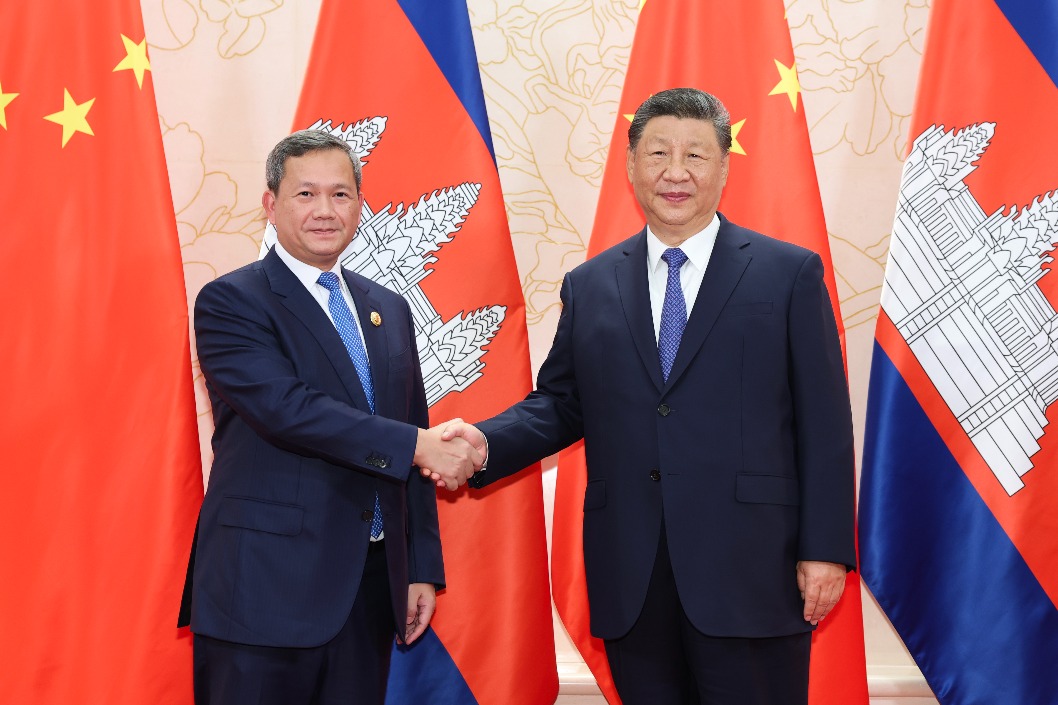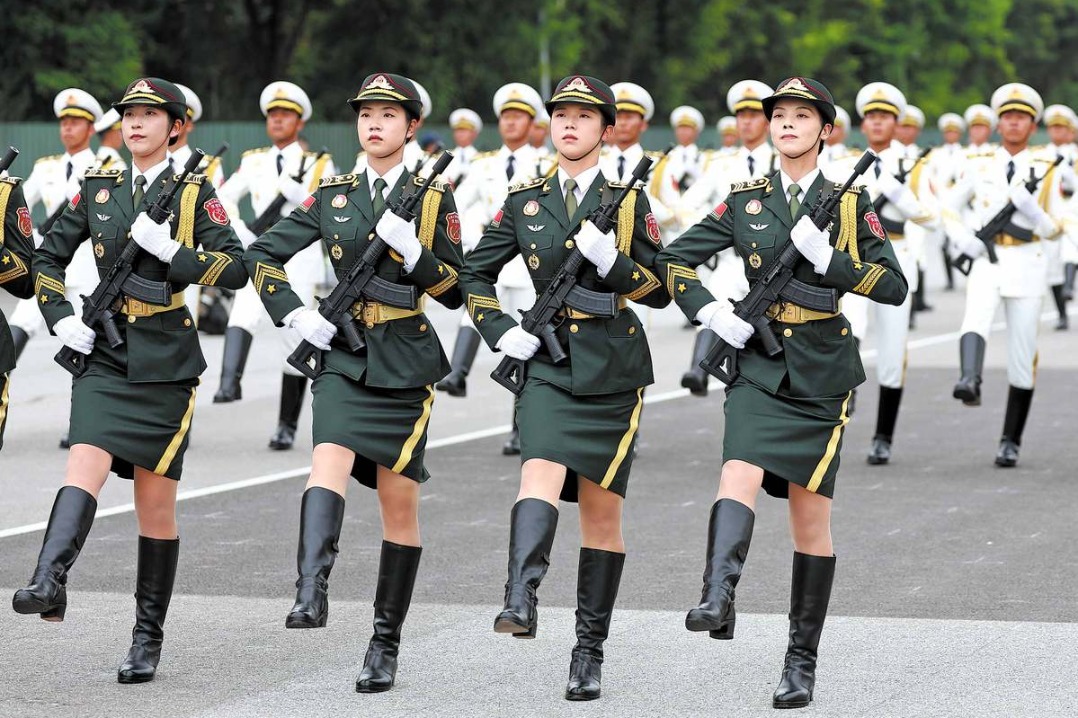China still leading source of foreign students


In the grand narrative of globalization, China's economic policy of reform and opening-up over the past more than four decades has been a core theme, as it has increased the flow of people across borders, apart from drastically boosting trade and investment, epitomizing the essence of global interconnectivity.
This period of unprecedentedly high level and scale of cultural and intellectual exchanges between different countries saw China become the biggest source of international students. For more than a decade, China has accounted for the highest number of students in leading education destinations in the world, reflecting the importance of education, especially academic excellence, in Chinese culture and preparing the Chinese people for a globalized future.
Biggest contributor of international students
The latest Center for China and Globalization report says more than 1.02 million Chinese tertiary students were studying abroad in 2021, highlighting China's position as the biggest source of overseas students in the world.
Through the 2022-23 academic year, China remained the leading source of international students, with significant presence of Chinese students in leading destinations for international students. In the United States, for example, China is the biggest source of foreign students this year, with about 289,000 students, maintaining the top position for 15 years, followed closely by India.
In Canada, India has the highest number of international students followed by China, which had about 100,000 students in the North American country in the 2021-22 academic year.
Australia echoes the pattern in the US, with China being the primary source of international students, contributing about 162,826 students in 2022-23. India was in the second position.
The United Kingdom saw a steady rise in the number of Chinese students during the COVID-19 pandemic, with their number reaching 158,335 in the 2022-23 academic year, although the growth rate of Indian students was higher than China's.
Germany and France hosted relatively small, but significant, numbers of Chinese students (about 40,000 in Germany and 29,000 in France). Japan, too, has a sizable number of Chinese students — about 103,000, the highest among all countries.
Diversified destinations for Chinese students
The Center for China and Globalization report also highlights a dynamic widening of destinations for Chinese students. As information on higher studies abroad becomes increasingly transparent, students can now also choose to study in less familiar education destinations. This shift has led to a diversification of education destinations beyond the traditional Western countries.
Historically, Chinese students have favored developed countries such as the US, the UK, Australia, Canada and Japan for overseas studies. However, a growing number of countries and regions are also becoming attractive to Chinese students.
Germany and New Zealand, known for their excellent educational institutions and cost-effective standards of living, have become increasingly attractive education destinations for Chinese students.
Additionally, emerging overseas education destinations in Southeast Asia (Singapore, Malaysia and Thailand) and Europe (Russia, Belarus, Italy, Ukraine, Ireland, Spain, Sweden and Switzerland) have made it to the list of top 20 overseas education destinations for Chinese students. They host thousands, and in some cases tens of thousands, of Chinese students.
Other countries such as Turkiye, Finland, Denmark and Poland each host more than a thousand Chinese students, while Middle East countries such as Saudi Arabia and Iran, and South American nations such as Argentina and Brazil also host hundreds of Chinese students.
Students' preference for STEM courses
Chinese students continue to favor STEM (science, technology, engineering and mathematics) courses, while their interest in disciplines such as business and management has declined. The 2023 Open Doors Report shows a shift in Chinese students' major preferences in the US, with an increase of 62.5 percent in STEM courses in 2022-23 — much higher than the average for all international students. On the other hand, the number of Chinese students taking up business administration courses in the US has declined from 24.3 percent to 13.4 percent since the 2015-16 academic year. The trend in Australia and Germany is similar.
Simultaneously, the reasons Chinese students choose to study abroad are diversifying, for instance, they seek greater international exposure, and want to widen their vision and engage in cross-cultural exchanges. This development is reflected not only in their increasing choice of education destinations, but also in the shift toward more diverse fields of study and more personalized educational experiences.
For example, France has become a preferred destination for Chinese students interested in the humanities, arts and languages, with 40 percent of the Chinese students in France enrolled in these courses. This trend underscores the growing demand for personalized development, which is linked to new industries and career paths.
Drastic increase in overseas returnees
More important, an increasing number of Chinese students are returning home after completing their studies abroad, with the returnees outnumbering new overseas students in 2020 and crossing 1 million in 2021. Since the launch of reform and opening-up, more than 6 million Chinese overseas graduates have returned to the country and played a crucial role in China's modernization. This represents a pattern of circular mobility, influenced by global corporate activities and increased international engagement.
In fact, overseas returnees dominate multiple fields. In 2023, for example, 57.9 percent of the newly appointed academics in the Chinese Academy of Sciences, the Chinese Academy of Engineering and other institutions and organizations were overseas returnees. Specifically, 81.4 percent of the new Chinese Academy of Sciences' appointees and 39.2 percent of the fresh Chinese Academy of Engineering's recruits had overseas education experience.
According to the Ministry of Human Resources and Social Security, as of 2023, individuals with overseas degrees headed over 70 percent of key national projects, accounted for about 40 percent of the national science and technology award winners, and occupied the president's post in more than 70 percent of the universities under the Ministry of Education, and the director's position in most top-tier hospitals.
Overseas returnees have made significant contributions to China's innovation capacity, entrepreneurship and emerging sectors, especially in high-tech and the new economy. Starting in 1992, overseas returnees began establishing leading companies such as Baidu, Ctrip and Meituan, too, marking a pivotal shift toward a market-oriented economy and increased sustainability.
By July 2023, an increasing number of overseas returnees were playing significant roles in China's governance, with a substantial percentage of high-ranking government officials being overseas returnees.
This blend of entrepreneurial vigor and involvement in governance underscores the vital role overseas returnees have played in working out and implementing China's domestic policies.
The government, on its part, has implemented favorable policies to help overseas returnees, particularly budding entrepreneurs. In 2017, for example, the State Council introduced the "Support Program for Overseas Educated Personnel Returning to China for Innovation and Entrepreneurship", which included sub-programs promoting innovation.
Expanding global reach of Chinese enterprises
Overseas returnees have also been playing a key role in expanding Chinese enterprises' global reach and localizing multinational corporations in China. They have helped Chinese enterprises get listed on overseas stock exchanges, strike merger and acquisition deals, and establish overseas production units. In fact, they have been involved in the listing of about 80 percent of Chinese companies on Nasdaq.
They have also facilitated the smooth integration of multinational corporations in the Chinese market, enhancing China's economic globalization.
Moreover, overseas returnees have contributed to people-to-people diplomacy and cultural exchanges, boosting China's image abroad and diplomatic relations, as emphasized by the country's top leader at the 110th anniversary of the Western Returned Scholars Association.
China remains committed to promoting economic globalization, with initiatives such as the Belt and Road Initiative, demonstrating its global engagement in different fields including education and diplomacy.
This commitment, strengthened by the top leader's pledge to welcome 50,000 US students to China made during his meeting with US President Joe Biden at the APEC meeting in San Francisco last November, reflects a broader policy of openness and people-to-people exchanges, which is vital for developing mutual understanding and facilitating cooperation. China's continued efforts to foster international cultural exchanges are a testament to its ethos of reform and opening-up.
These and other dynamic developments highlight the momentum of the Chinese economy's continual integration with the global economy.
Miao Lu is secretary-general of the Center for China and Globalization; and Wang Huiyao is president of the Center for China and Globalization.
The views don't necessarily reflect those of China Daily.
If you have a specific expertise, or would like to share your thought about our stories, then send us your writings at opinion@chinadaily.com.cn, and comment@chinadaily.com.cn.


































